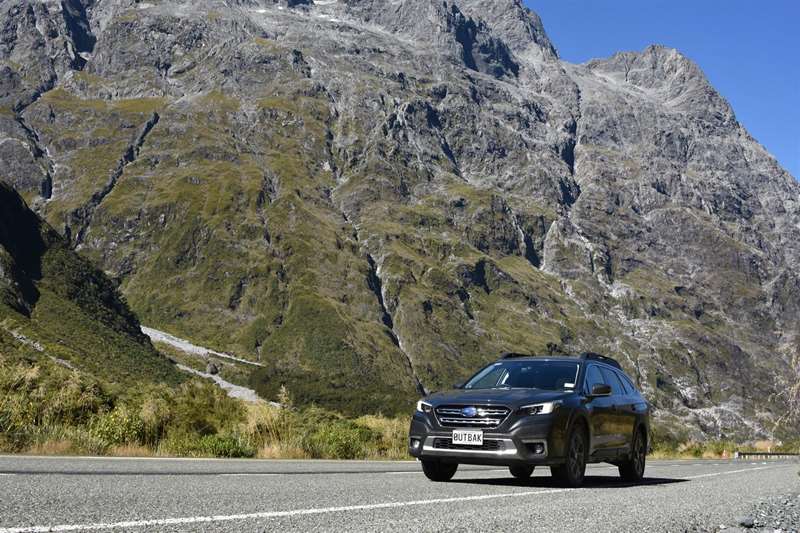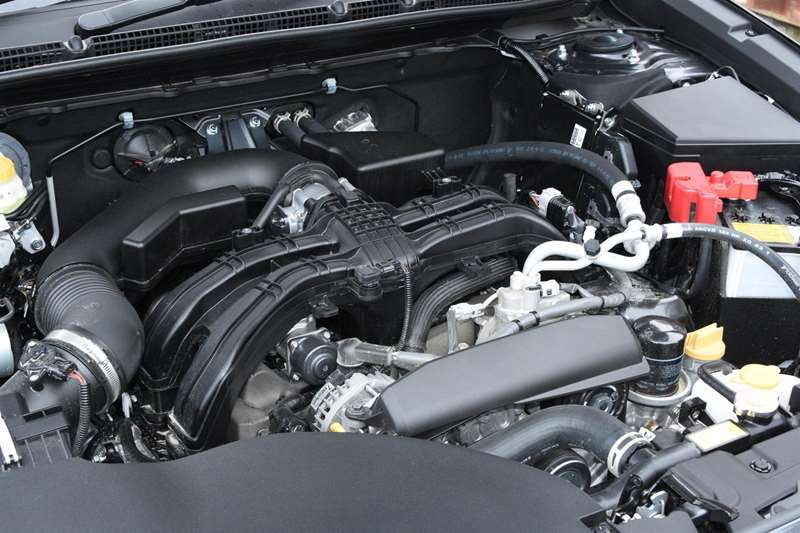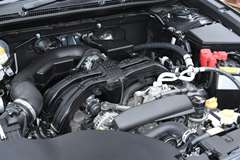David Thomson has been out and about in the latest Subaru Outback, and he is impressed by its capabilities as an open-road tourer.
What’s new?
The sixth-generation Subaru Outback was introduced to Drivesouth readers in March, following a media launch and drive programme that was based in Queenstown, and included a trek through the stream-studded trails of the Nevis Valley.
More recently, one example of the vehicle Subaru has dubbed the GOOAT — or Greatest Outback of All Time — was supplied for a full road test.
This latest Outback stays true to the high-riding wagon formula that has already been successful for more than a quarter of a century and was ahead of its time in introducing the concept of the lifestyle crossover vehicle to the world.
Evolutionary rather than revolutionary in appearance, the new vehicle features the familiar 2.5-litre boxer configuration petrol engine, CVT transmission and fulltime all-wheel-drive on all models. Yet the engine and transmission have been substantially reworked for this model.
The latest Outback sits on Subaru’s new global platform. This is significant, not only for the petrol models already on offer, but because the new platform has been purpose-designed to accommodate possible future hybrid and pure-electric powertrains, too.
At present, Subaru is offering the new Outback at three specification levels: the base Outback (as supplied for appraisal) lists at $49,990, the mid-spec Outback X at $54,990 and the flagship Touring at $57,490.
What’s it like to look at?
Given this is an all-new model sitting on an all-new platform, 50mm longer and 35mm wider than before, the styling of the latest Outback is uncannily similar to the vehicle it replaces. That similarity encompasses the new vehicle’s overall shape and elements of its exterior. If you are looking for clear changes, then focus an eagle-eye on the new grille, scalloped black plastic rocker panels and wheel arch flares.
The high-riding wagon look remains Outback’s obvious point of difference in a market segment dominated by taller, boxier SUVs. Ground clearance (213mm) is actually superior to most of the SUV-style vehicles that are the Outback’s main rivals.
All new Outbacks sit on 18-inch alloys with 225/60-tyres and include a full-sized spare, but with different wheel finishes according to model. Roof rails with Subaru’s clever integrated stowable crossbars are standard, finished in matte black on the standard and X, with metallic highlighting on the Touring.
The X features black rather than metallic exterior detailing with green accenting on the roof rails and unique badges, while the Touring is recognisable by its satin finish door mirrors.
What’s it like inside?
Subaru’s move to a new platform brings with it more interior space.
Deeper and wider than before, the boot now provides a 522-litre capacity, up from 512-litres on the previous model, and expanding to 1782 litres when the rear seats are flat. Rear legroom gets a boost, too, while the benefits of extra width are most noticeable in the front at both hip and shoulder levels.
The cabin layout is also more stylish. The front seats and driving position lift Subaru’s game in respect of comfort and adjustability. Soft-touch and textured trim surfaces are widely deployed, in combination with glossy black and brushed metal highlighting and contrast fabrics and stitching.
The move to a portrait-format 11.6-inch centre touchscreen is important as a symbol and enabler of significant advancement in the new Outback’s infotainment suite. The suite, which now takes full climate control, trip computer and X-mode selection via the touchscreen, is impressive in many respects, notably in reducing button clutter —counting the volume and tune knobs that flank the touchscreen, there are just nine buttons on the main dash and console.
Subaru has steered clear of fully digital displays and the main instrument cluster still features conventional tachometer and speedometer dials either side of a small multi-instrument display screen. This new Outback is also old-school in retaining a conventional gear-shift lever on the centre console.
In-cabin storage options are plentiful, and 12-volt charge sockets can be found in the boot area and glovebox. There are also dual USB plug-points front and rear.
What comes as standard?
At entry level, the specifications includes self-levelling LED headlights, remote central locking and keyless entry, wired smartphone mirroring, a six-speaker sound system, dual-zone climate control, interior LED lighting, raining-sensing wipers, power-operated front seats and dual-mode SI-Drive.
The safety package is comprehensive, and lists adaptive radar cruise control, adaptive headlights, blind-spot monitoring, rear cross-traffic alert, reverse automatic braking and tyre pressure monitoring. Subaru’s EyeSight crash avoidance systems are also provided, and include lane-departure warning and lane-keeping assistance, speed sign recognition, pre-collision braking and driver attention alert monitoring.
Opting for the X adds satellite navigation (an odd omission at base-level these days), heated front and outboard rear seats, a leather-rimmed steering wheel, sports seats, a power-operated hands-free tailgate, water-repellent seat trims and front and side-view monitors.
The flagship Touring picks up a power sunroof, nine-speaker Harman Kardon sound system, nappa leather trim, a heated steering wheel and a dual memory driver’s seat.
What’s it like to drive?
Subaru’s launch programme included some vigorous back-block adventuring through the Nevis Valley, during which the vehicle fully displayed its ability to take unsurfaced roads, a multitude of water crossings and other obstacles in its stride.
Rather than reprise that intrepid endeavour, this road test stuck to the black-top on a return trip from Dunedin to Milford Sound.
While the drivetrain configuration is business as usual for the Outback, it’s worth noting that 90% of the engine’s components are new and that a modest lift in peak power and torque (the latter from 235Nm to 345Nm) is accompanied by a shift from an eight rather than seven-stage CVT (with paddle shift controls even at entry-level).
With these changes, the new Outback holds its own in terms of performance compared to the old model, while providing a useful lift in towing capacity (to 2000kg).
As before, performance is decent rather than striking, with the key gain being a marked increase in mechanical refinement. Combine this with excellent ride quality, decent levels of noise suppression and very comfortable front seats, and the new Outback is a highly accomplished and relaxing open-road cruiser.
There is some body roll and progressive understeer under vigorous cornering, but the test car was exemplary in its ability to soak up mid-corner humps and bumps. Its steering, while providing limited feel, was accurate and progressive.
Around town, motoring was fuss-free, too. Once again, refinement comes to the fore as one of the vehicle’s key strengths.
Verdict
A fresh approach to interior design and new ICT interfaces are the most obvious steps forward for the new Outback, but it also rates highly for further improving on the open-ride comfort and refinement that were hallmarks of its predecessor.












